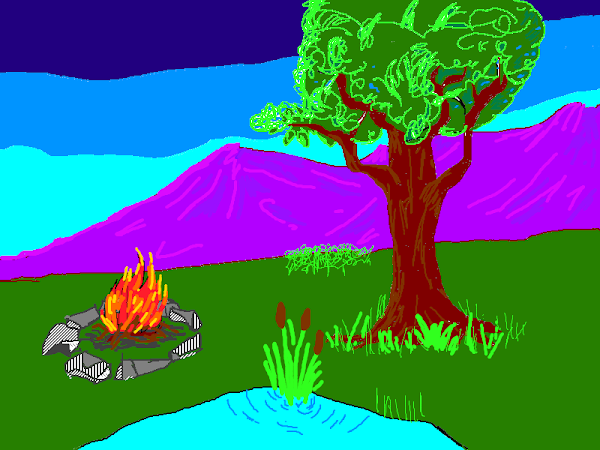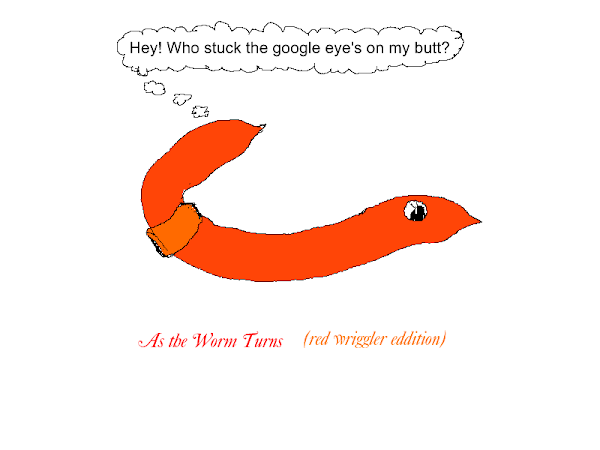Well, I'm back.
I have this problem. You see I have this urge to actually DO things rather than sit in front of a computer wriggling my fingers on top of a key board.
Speaking of actually doing things. I built my very own 'Lasagna garden'/square foot garden about a week ago. Just before this last freeze here in the city of Lone Oak, in Hunt County of the great state of Texas.
I have been told that there are some folks out there who have no clue as to what the heck either a square foot garden or, perhaps especially, a lasagna garden is. Sorry, I forget that not everyone is as into the green thing or even just gardening as I.
Where to begin?
Square foot gardens might be best, I suppose.
In square foot gardening the aim is to grow as much as possible in a single square foot of space. It could also be, and maybe is, called intensive gardening. It often makes use of trellises instead of allowing things usually planted in 'hills' to spread out over the ground and thus take up more horizontal space.
"So what?" you may say. "I've seen all kinds of things growing on trellises. Roses, grapes that kind of stuff." Yeah, but Square Footers tend to trellis almost everything that would ordinarily spread out and leave the fruit laying on the ground. Things like pumpkins, watermelons, and cantaloupes as well as some variates of tomatoes and squash. Obviously they do not go for the biggest possible variety of these plants. You do not grow a 500 pound pumpkin on a trellis. Unless, of course, you know a competent welder.
Back to square foot gardening itself.
The square foot garden is usually no more than four feet across and is often only four by four feet in all and is also often a raised bed. Though one can be several feet long it should never be more than 4 feet across. This is so the gardener can reach into the middle of the garden without ever stepping into it. A frame of some kind, be it removable wired together dowel rods or permanently fixed, is also used. It is set up so that it marks of square foot sections of the four by four space. My understanding is that you then plant your plants, or seeds, at a fraction of the distance called for on the seed packets. And you do not thin the crop later. The whole idea is to have a thick planting. You want the plants to overlap and cut off the sun from any of the weed seeds that may be lurking in the gardens soil.
You will, of course, have fed that soil heavily with compost and composted manures that have been well mixed into the soil before planting.
Now for the oddly named lasagna garden and what I ended up with.
It is called a lasagna garden because it is built up of layers like a pan of lasagna.
First, the pan.
This is a nice layer of wet newspaper and you lay it down where ever you want your garden to be. Oh, don't bother with a shovel and forget gassing up the tiller. You place that wet newspaper right down on top of whatever is already there, be it lawn, or a mass of pressed down weeds. In fact if the grass is real tall you could mow it then rake it up for later use as a layer in the garden.
Anyway! Lay down the wet newspaper, overlapping the edges, in what ever shape you want your garden to be. You can go traditional with long rows or do as I did and make it a kind of four by four, sorta square. ( I didn't break out the tape measure and t-square if you are wondering.) I laid my saved up newsprint over the grass infested semi raised bed I'd made last year. I even used some old Lone Oak Newsletters which are printed on copier paper.
That done, I pulled a friends two wheel blue cart over to my goat pen and used a horse stall rake to pull out the hay the goats had trampled, and...umm...amended with their manure. I piled that on top of the wet newspapers and spread it out. It took two loads and I guess you could think of it as the pasta in the lasagna.
After recuperating from that exercise for a half hour or so on my front porch swing I trundled the blue cart out to that little hill of whats left of the horse manure pulled out of the horse barn last year. There I did need a shovel to dig up the rich, rich dark brown loamy stuff it had become. That was piled on top of the used hay in the garden and I called it a day. Keeping to the 'lasagna' model, I guess this layer would be the 'sauce'. The day after that the predicted cold snap was lurking nearer and I had recovered enough to prompt me to further effort.
I went to Wal-Mart(c) and bought some peat moss, potting soil, and, just for fun, some hard wood mulch. When I returned I unloaded my truck (with a little help) and then scrapped up some more of that well used goat hay to spread over the top of the composted horse manure. (another layer of pasta!)
Now at this point I have to point out that I could have kept going with these alternating layers until I had a pile about a foot high or even higher. Laziness and the coming cold got in the way of that. Instead, I spread the peat moss (cheese?) over the top of the used hay, opened up the bag of potting soil and started planting the cool weather veggies. I couldn't leave them outside in their little pots or they'd freeze and that would be a waste of my hard earned money. I couldn't bring them in either as the cats would likely eat or just destroy them and that would also be a waste of my money. They had to be planted and covered somehow.
Thus, I extended myself, and planted them all that afternoon with few rest breaks. Boy, did I pay for it that night! And the next day! And the day after. (There is a reason I'm on disability.)
I planted them this way. First I dug a hole through the peat moss down to the hay and filled it with a fist full of potting soil. Then I plopped in the plant, surrounded it with a couple of more fist fulls of potting soil and snugged the peat moss over the soil to keep it moist.
By the time I finished I had one nine pack each of Broccoli, Cauliflower, Brussel Sprouts, head cabbage and head lettuce as well as a good number of red and white onions planted in a nearly four by four area. Yeah, I know. It looks crowded even to me.
I was bone tired by then but I hung in there to deploy the wood and plastic contraption I'd come up with to keep the freezing cold away from the tender young veggies.
The wind that night played havoc with the plastic. Fortunately a weather report I'd missed had put the actual freeze off until the following night. A better thought out freeze protection contraption worked much better.
That was all a week or so ago. The plants seem to be doing fine. The thing I have fixed up to protect them from freezing nights may have to be deployed once more this coming week and in weeks to come, but I'm sure it will work again despite the holes the plastic has already developed.
They are cool weather plants after all.
I'll use the hard wood mulch either on my other gardens or build another lasagna garden and use it as I used the peat moss.
But first I need to buy a couple of Sunday newspapers.
Subscribe to:
Post Comments (Atom)






Ayup, good stuff here. Keep writing!
ReplyDelete